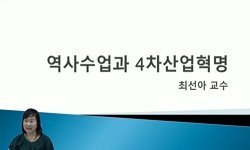(Background and Purpose)While elderly couple households and single-person households are increasing due to the rapidly aging society, an increasing number of elderly people want to live in the same place they used to live rather than in a facility out...
http://chineseinput.net/에서 pinyin(병음)방식으로 중국어를 변환할 수 있습니다.
변환된 중국어를 복사하여 사용하시면 됩니다.
- 中文 을 입력하시려면 zhongwen을 입력하시고 space를누르시면됩니다.
- 北京 을 입력하시려면 beijing을 입력하시고 space를 누르시면 됩니다.
https://www.riss.kr/link?id=A107873658
- 저자
- 발행기관
- 학술지명
- 권호사항
-
발행연도
2021
-
작성언어
-
-
주제어
Super-aged Society ; Age-Friendly ; Fourth Industrial Revolution ; Aging-Tech ; Active aging ; 초고령사회 ; 고령친화 ; 4차산업혁명 ; 에이징 테크 ; 엑티브 에이징
-
KDC
600
-
등재정보
KCI등재
-
자료형태
학술저널
- 발행기관 URL
-
수록면
129-141(13쪽)
- DOI식별코드
- 제공처
-
0
상세조회 -
0
다운로드
부가정보
다국어 초록 (Multilingual Abstract)
(Background and Purpose)While elderly couple households and single-person households are increasing due to the rapidly aging society, an increasing number of elderly people want to live in the same place they used to live rather than in a facility outside the home in their old age. In order to solve the problem, the demand for various care service industries for the elderly to lead a psychologically stable and comfortable life is increasing, and the aging tech industry using convergence technologies such as the Internet of Things, mobile, big data, VR, AI, and robots, which are the core technologies of the 4th industrial revolution expected to help. This will improve the changes and deterioration of the body and function of the elderly due to aging, maintain a psychologically familiar living environment, and help continue social life. Therefore, the purpose of this study is to analyze the elderly and the aging tech industry, to suggest ways to utilize the aging tech for the Aging in Place, and to present evaluation criteria.(Method) First, this study reviewed literature and previous studies to understand the elderly who are the target of aging tech services, super-aged society, and aging stage. Second, it examined the aging tech industry, which is a convergence industry of 4th industrial revolution technologies in developing. Third, it composed evaluation items in terms of safety, operation and functionality, and convenience, which are the standards of the Usability Test for Senior Friendly Products of the KHIDI to analyze aging tech services related to the elderly. Detailed evaluation items were established by primary and secondary extraction through FGI. Finally, implications and directions for improvement were derived based on the results of case analysis with evaluation items. (Result) Comprehensively examining the case analysis, first, stability was good, operability was normal, and convenience was insufficient. Second, it is considered that the accessibility of the elderly is poor by the way the guardian or caregiver executes the product. (Conclusions) This study selected and analyzed cases by category among aging tech services and products that have been released and used with the purpose of deriving the utilization of aging tech for the active ageing of the elderly. In order to verify and utilize the evaluation tools established through the primary and secondary extraction processes, it is necessary to construct various cases and evaluator samples in the future, through which it is thought that more in-depth characteristics and problems can be derived. In this context, more empirical studies should be conducted in the future to specifically identify the needs of the elderly and problems in service use.
동일학술지(권/호) 다른 논문
-
창의적 디자인사고와 디자인 프로세스를 고려한 공간디자인 연구
- 한국공간디자인학회
- 오미현 ( Oh Mihyun )
- 2021
- KCI등재
-
도시 특성에 따른 범죄예방(CPTED) 개발 연구 - 남양주시 금곡동을 중심으로 -
- 한국공간디자인학회
- 안진근 ( Ahn Jinkeun )
- 2021
- KCI등재
-
- 한국공간디자인학회
- 김미숙 ( Misook Kim )
- 2021
- KCI등재
-
링난(嶺南) 지역 박물관에서 나타나는 지역주의 표현 특성에 관한 연구 - 비판적 지역주의 관점을 중심으로 -
- 한국공간디자인학회
- 배종정 ( Pei Congjing )
- 2021
- KCI등재





 KCI
KCI KISS
KISS






